The year was 1962 and the story of Virgil Exner’s last design assignment for Chrysler in the form of the first B-body is widely known. It is feared that rival General Motors will scale down its cars, so Plymouth and Dodge take Virgil Exner’s design for full-size cars and make intermediate vehicles based on it.
It’s not a commercial success. Out roll cars that look like they were designed with wild, unconventional ideas. A few years later, Virgil Exner himself calls the cars “plucked chickens.”
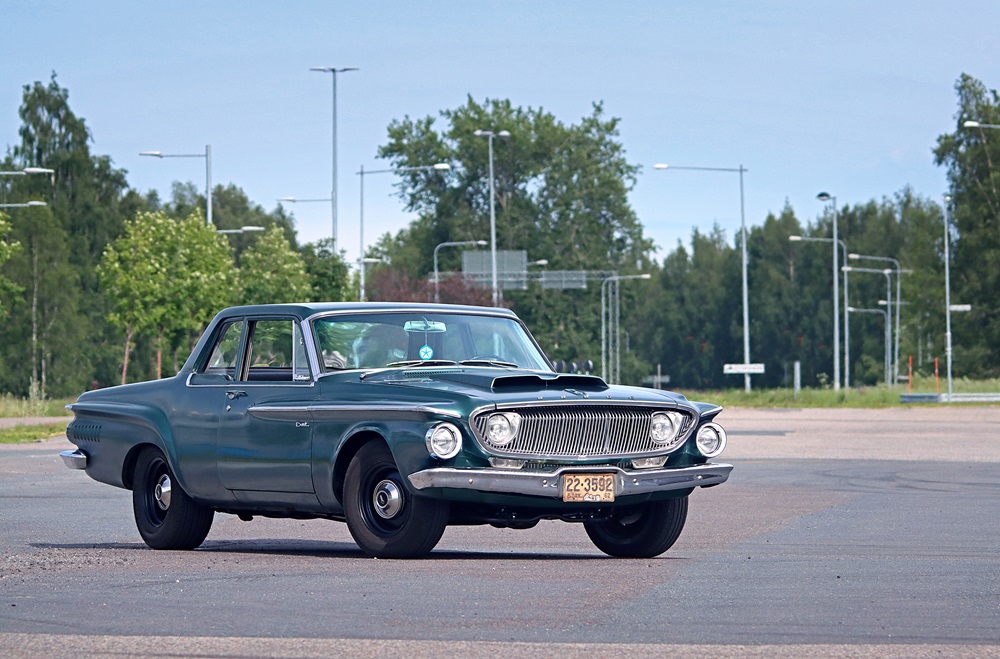
What Exner misses is that he is creating the car world’s answer to free jazz and progressive metal. A vehicle for real car lovers, those who do not need to hide behind the collective perception of what is appealing and beautiful. Beauty is in the eye of the beholder.
The 1962 Dodge Dart and Polara, and the Plymouth Fury from 1962, are not misunderstood beauties. They are cars with character. Just like French bulldogs have, and Motörhead singer Lemmy Kilmister had.
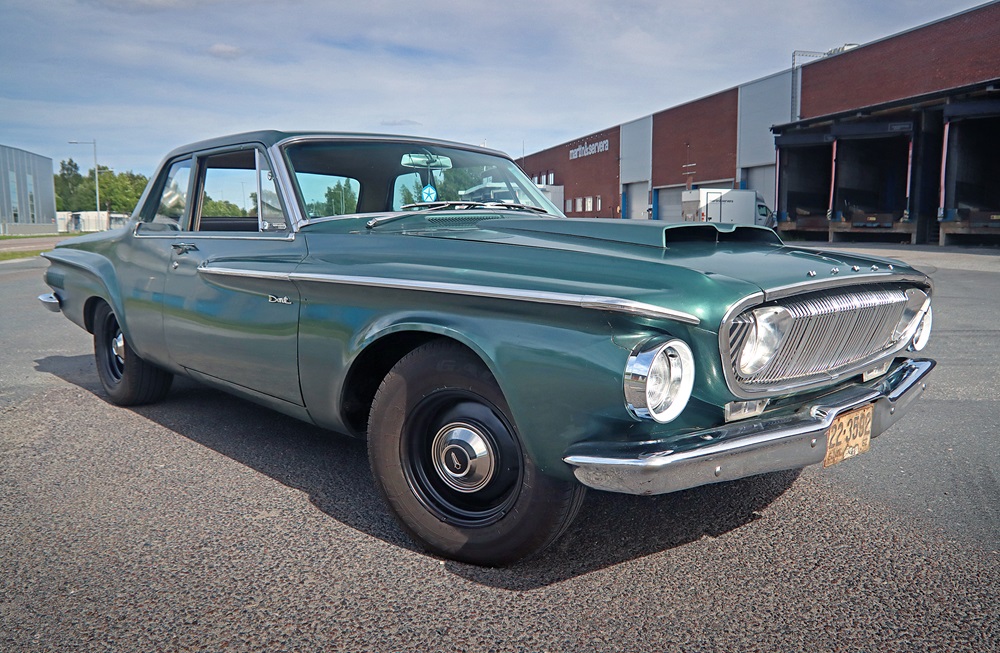
“They are so ugly you just have to love them. They have an amazing charm. Unfortunately, not many people agree with that. Personally, I think it’s fun to come to a car meeting and not have the same car as everyone else.”
Mikael Karlsson in Luleå laughs with satisfaction. He has no quarrel with people who don’t like his Dart. It doesn’t bother him, at all. People can think what they want.
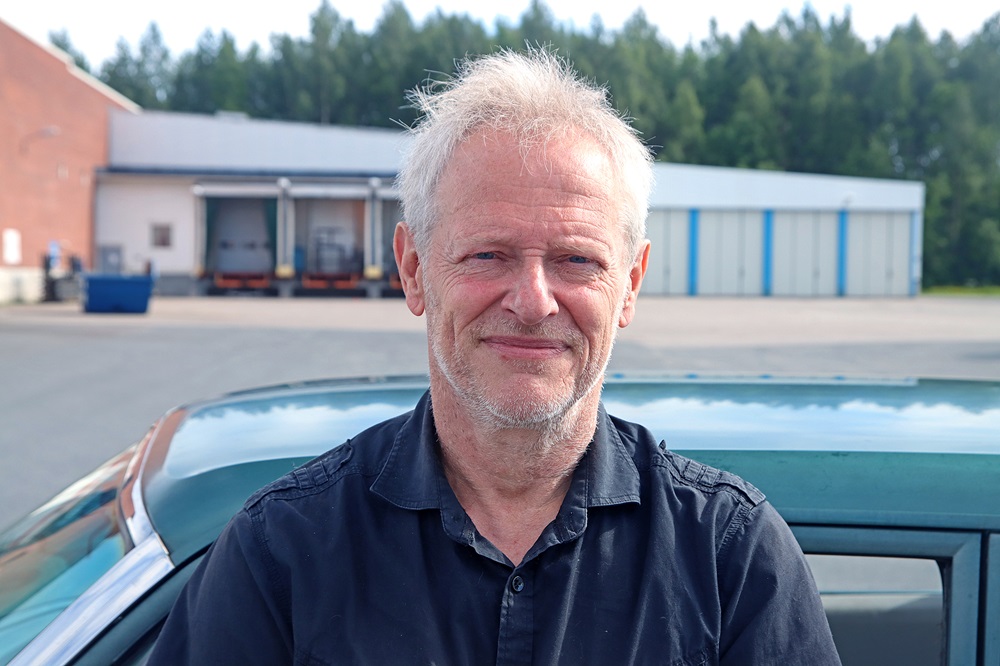
It was different in the past, when Karlsson was young. There was a certain anxiety there. Karlsson remembers when there was a four-door Dart ’62 for sale in town. If Mikael had bought it, his friends would have let him know he was alive, Karlsson laughs. He bought a 1971 Camaro instead.
But then one day, the calendar tells him that the year is 2019. Mikael has turned 59 years and gone is the feeling of having to belong to a special group of people with a clear opinion at any given moment. Like “We the 20,000 Camaro owners in Sweden” or “We who love black 1968 Dodge Chargers”. It’s time for Dodge Dart.
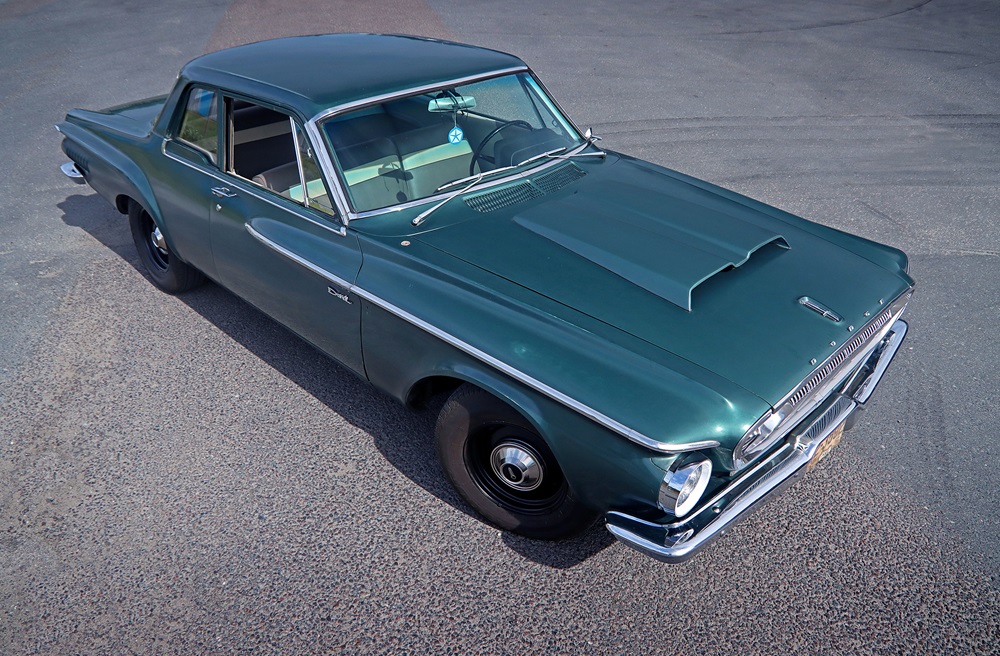
Mikael finds the Dart in Germany. A guy in Hamburg imported it from South Dakota in the USA. However, it is not the Hamburg man who sells the Dodge to Mikael, but owner number two in Germany. He lives in Leipzig and has started tinkering with the car, but then realized that he will not be able to finish the renovation project.
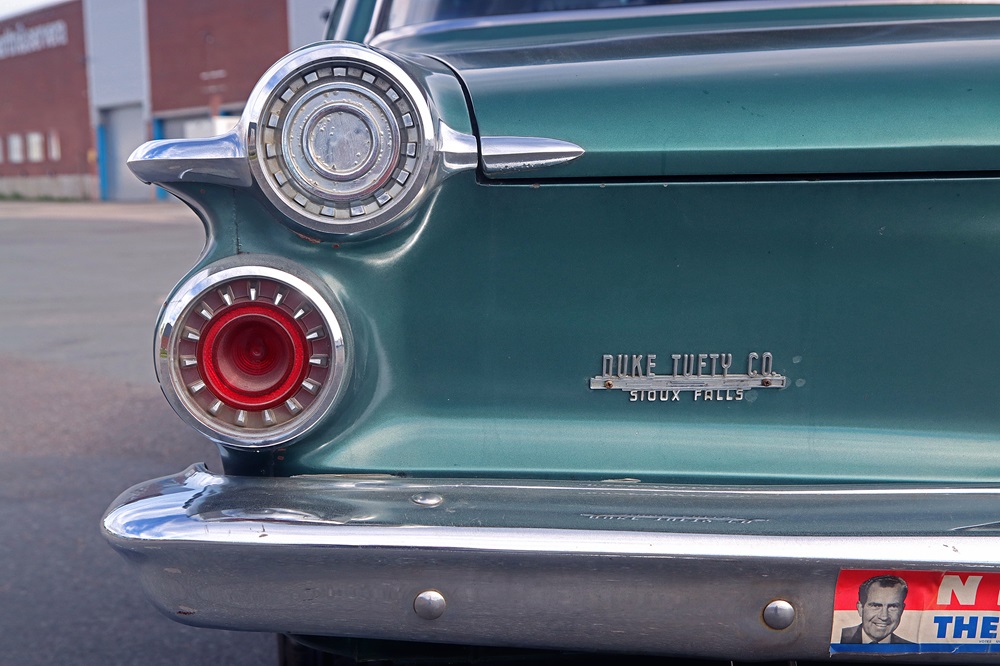
“The car was sold new by a Dodge dealer Duke Tufty Co in Sioux Falls, a 15-minute drive from Mount Rushmore. The car will arrive in Germany around 2009. They have started a restoration project, replaced the floor with Auto Metal Direct sheet metal. They did a really good job. However, the project was stopped from 2014 and the last owner never got to drive the car. The ignition had lost three of six magnets straight down into the distributor. The straight six that was in it at the time can’t have gone very well … I brought it home to Luleå in northern Sweden on a trailer, when I bought it in 2019,” Karlsson says.
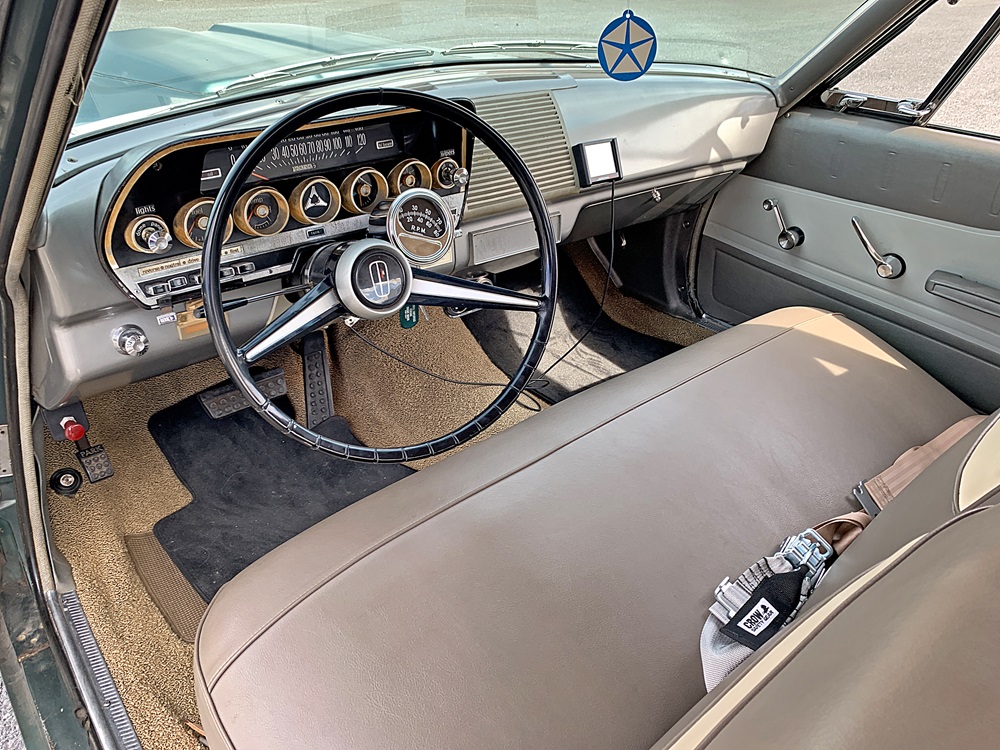
One of the advantages of the Dart purchase is that the 1965 gearbox, a 727, comes with it. Which fits with the existing push button control, but also the engine change that is waiting around the corner. Yes, Mikael has a plan. To replace the straight six with a 440 cui V8, but keep the existing button shifting panel and function. But also make sure that the gearbox, cardan shaft and rear axle will withstand a little more push and shove and finally review the chassis for stable road holding.
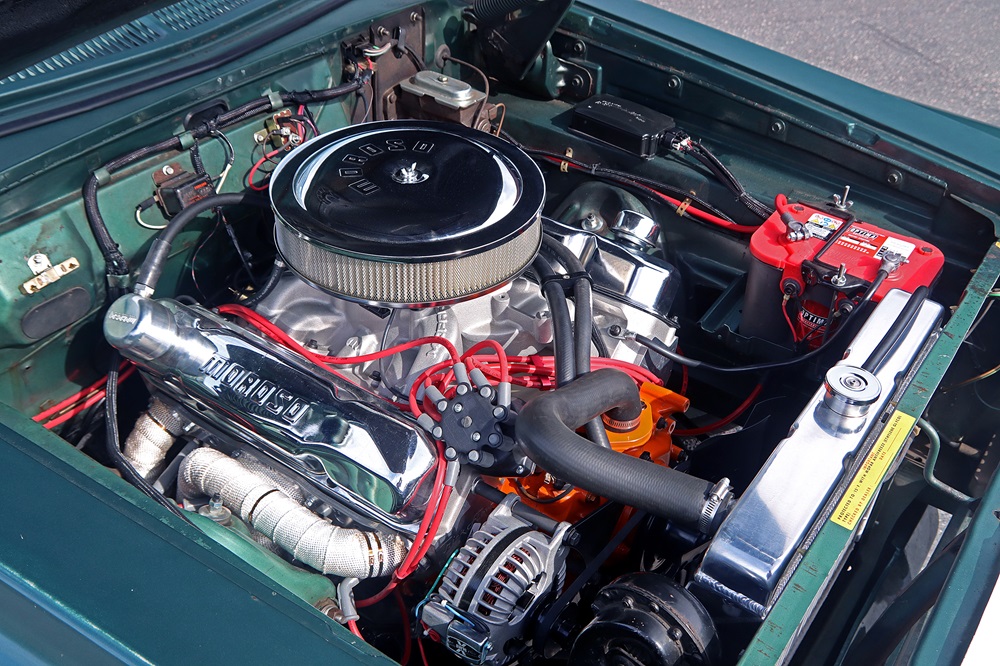
Let’s start with the 440. Once Mikael has decided on a replacement, he starts looking at what the second-hand market has to offer. Pretty soon, he realizes that a fair number of used 440 engines come from old American motorhomes. That is, low-compression iron lumps without much power, but a thirst for gasoline that would have made any serious drinker blush.
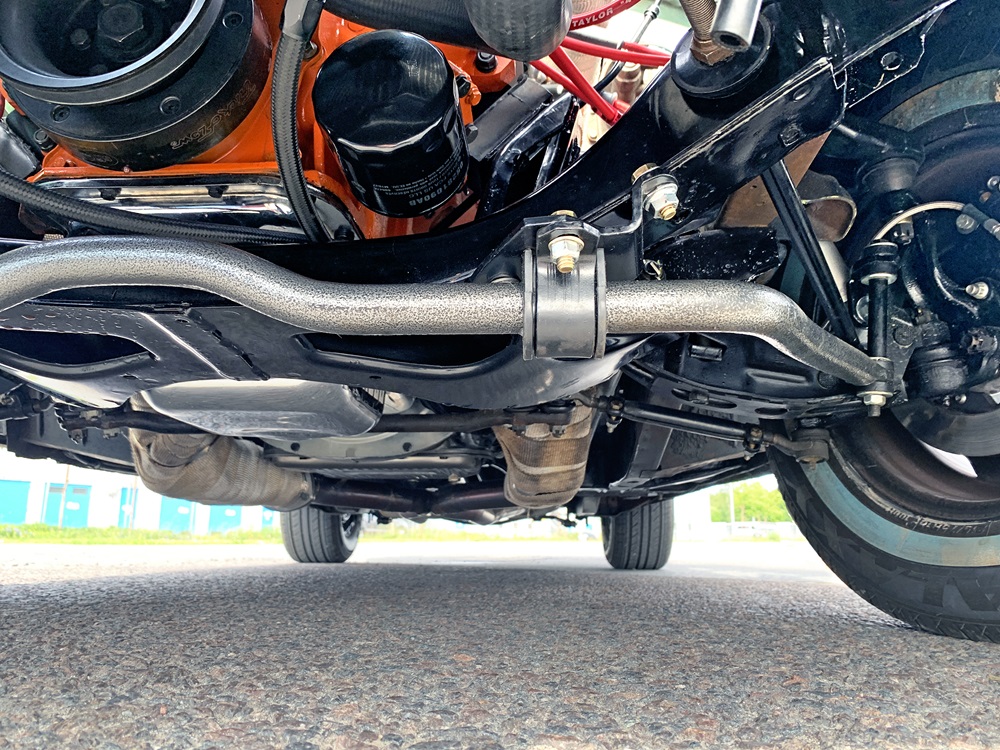
“I was looking for a good object, and one of the things I wanted was a forged crankshaft. Soon I landed at the American forum Racing Junk where I found a 440 with magnaflux tested block. The block was even top decked, so squish is close to zero. The fact that the V8 came with Ross Racing pistons was of course good. They weigh 650 grams each, compared to the original pistons that weigh over a kilo. The block had an overbore of 0.040 inches. So the cylinder volume is more exactly 448 cubic inches.”
Karlsson still has some work to do on the 440, even though the machine work has already been done. Review cam lobe separation, calculate static and dynamic compression. It’s a bit of a hassle to put together an engine that will perform and last, according to Karlsson.
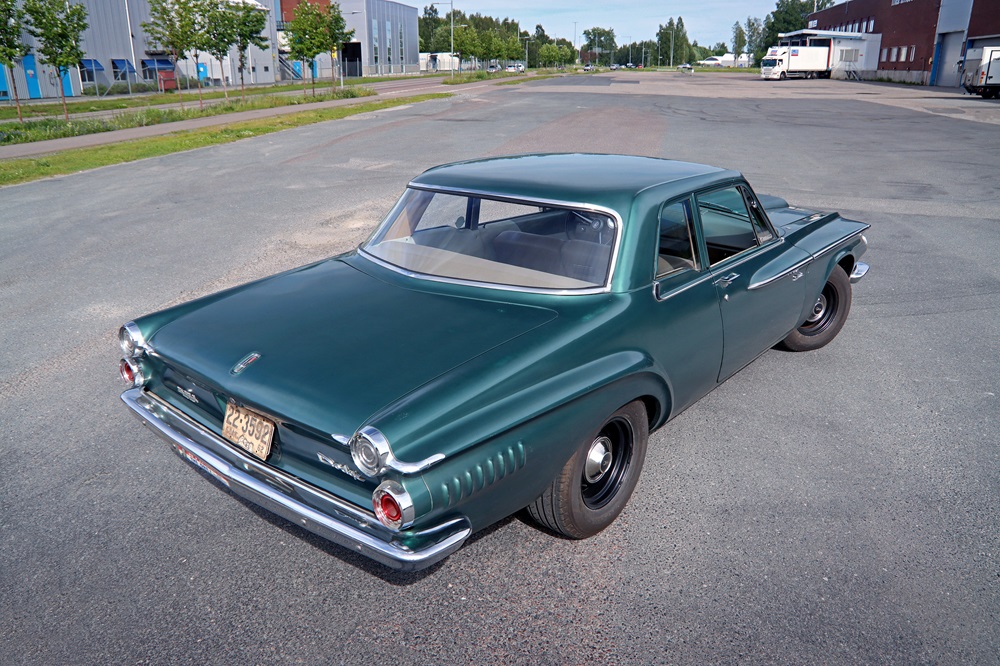
“No, it has not been tested in an engine test bench, but according to the calculations I’ve done, the V8 delivers approximately 534 horsepower in theory. I think that’s pretty accurate. It’s not a roaring engine, but built to be driven quite a lot and there’s plenty of whopping performance when you stomp on the gas pedal.”
There are a few things every Mopar® enthusiast has to take into account if they are going to put an RB engine block in the 1962 B-body. The first is the clearance between the oil pan and steering rack. You will momentarily hit a snag if you just try to limp the 440 down. To solve this problem, Karlsson learned that the oil pan of an original 440 in a 1973 Dodge Charger works. Moroso makes a copy of this with the model designation 971.
Another thing that is important to consider is the front end design. Here, Chrysler changes the design of the so-called K-member a bit into the production year. This affects the engine mounts, and you can read more about this in the fact box.
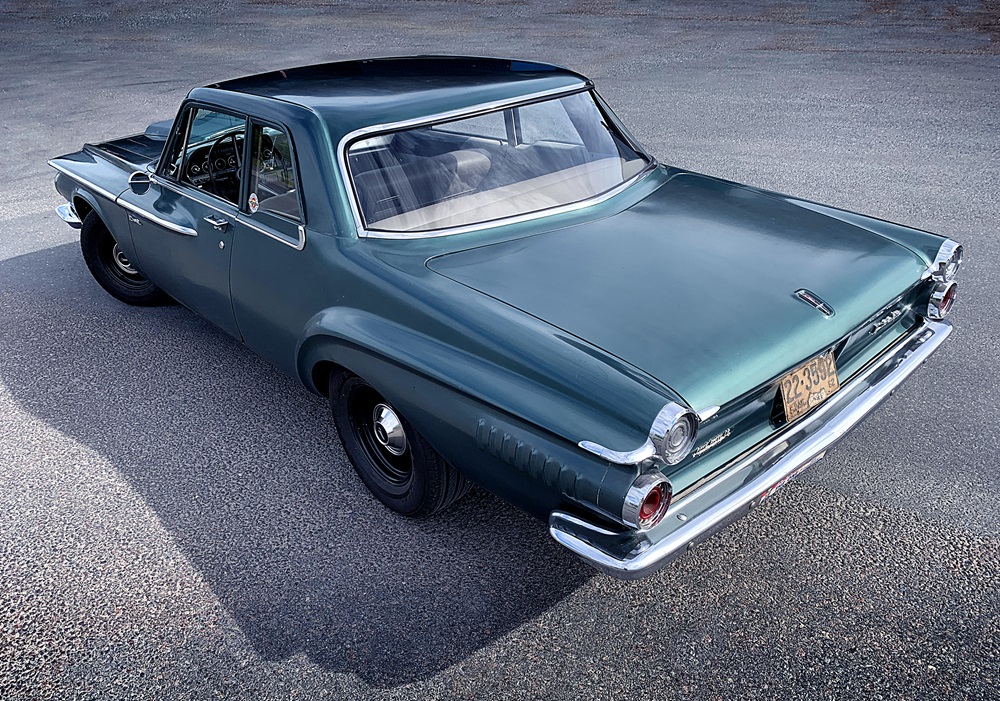
Further down the line, Mikael has placed a modern slip yoke behind the 727 from 1965 instead of the old Detroit universal joint. Which allows a new tough universal joint that should withstand some 1,000 horsepower. Furthermore, an old 727 gearbox is used with an input shaft with 19 splines. With it, it is difficult to find a modern converter that fits. Mikael has switched to a 24-spline input shaft, which requires some remodelling of the oil pump. To seal properly, there will be a change of the sealing rings that do this job. Then there is a converter from Hughes between engine and box.
The rear axle, an 8 3/4, is upgraded with a 742 housing as third member instead of the 741. Mikael has mounted an Eaton Trutrac diff brake in it.
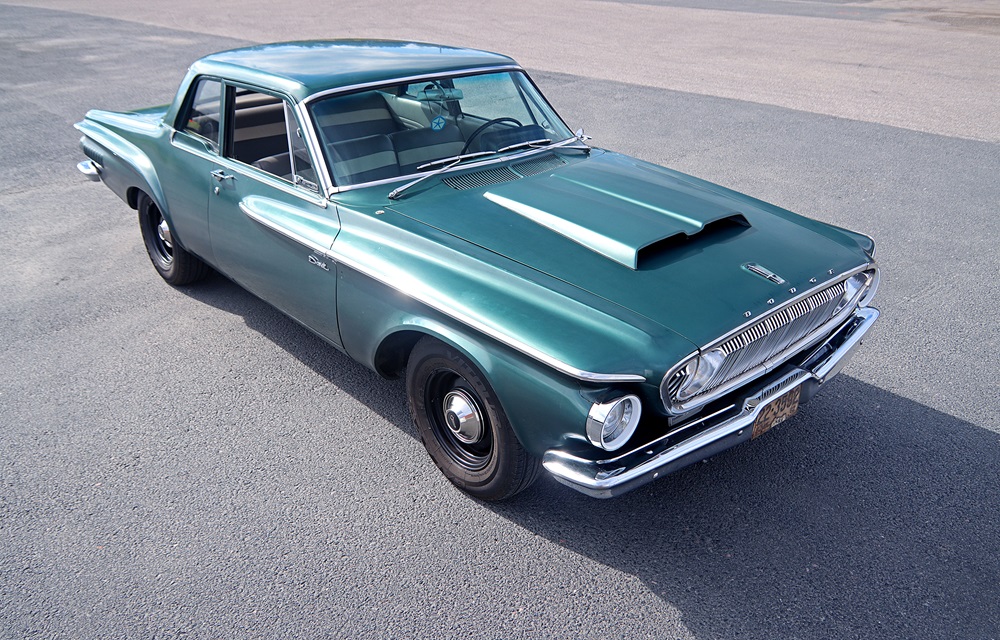
So to the funniest and most interesting part. How do you get a Chrysler chassis from the early ’60s to behave like something other than a really old Volvo driven at 400 kilometers per hour? Mikael has some advice.
First up is the job of fitting anti-roll bars. Mikael takes a look at differents options, and notes that Summit’s own brand is suspiciously similar to the manufacturer Hellwig’s products. But with a nicer price tag. The choice falls on anti-roll bars for 1964-1969 B-body because there is only a few millimetres difference and they therefore fit. After that, it’s time to switch to beefier torsion bars.
“The original car has 0.86-inch thick bars. The new ones, from PST, are 1.03 inches. It was a brutal difference. Both on the road and the fact that the Dart collapsed in front with the originals after the 440 was mounted. It’s sad when the Dodge stands on its nose. These cars, they’re supposed to be cheeky.”
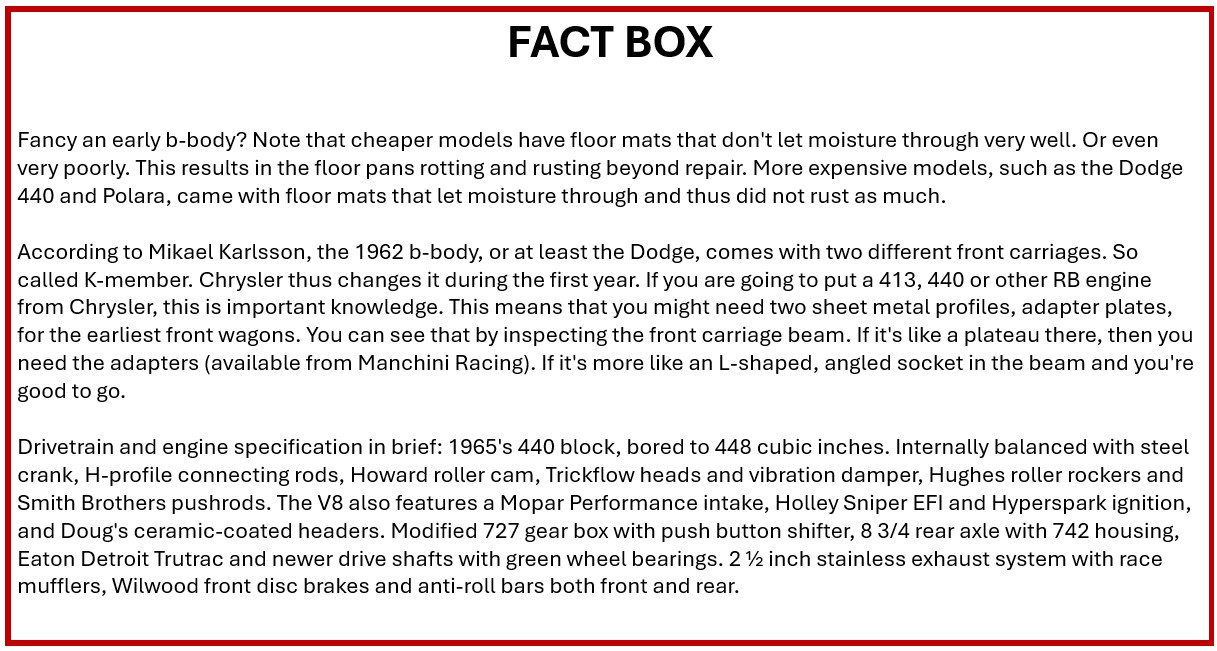
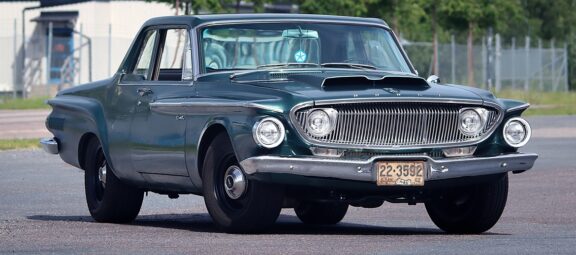
2 Comments
Great article on a great car! Lemmy would be proud! RIP
It’s genuinely a beautiful car. I love the circular tunes for the headlights and rear lights. I can imagine a flared concept of those lights. Making it more bold. Phenomenal car.